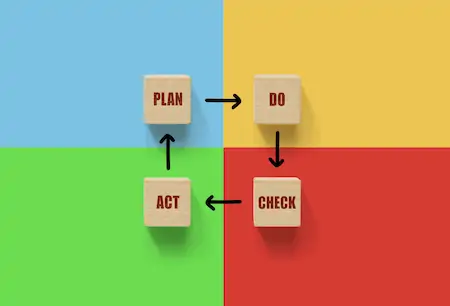Off-road journeys are a great way to spend quality time with your friends and family; and also to explore your adventurous self sometimes.
However, as fun as off-road journeys may seem, it’s often just incomplete and unsafe without adding a winch in your inventory. Winches can work with the help of remote control and without it as well.
In an emergency scenario, you have to consider the possibility of you not finding the remote. In cases like that, it’s essential that you know how to use a winch without a remote control.
Can You Use a Winch Without a Remote?

A winch is a great tool that can help you out of any sticky situation. If you are going off-road, chances are that your car, SUV, or even your truck might get stuck in places like a ditch, mud, sand bar, or a swamp.
In situations like these, you can only rely on a winch to quickly get yourself out of the sticky situation. Before we get into how to use a winch without remote control, let’s first talk about if we can actually use a winch without the need for remote control.
The answer is, yes!
You can use a winch without access to remote control. You might often find yourself in a situation where you left the remote behind or the remote isn’t working.
This is why you should learn to make your winch operate without needing a remote to do it. Keep on reading and follow the step-by-step guide below to understand how to do winching when you don’t have a remote.
10 Simple Steps of Winching Without a Remote

We now know that you can use a winch without access to remote control if necessary. With that out of the way, let’s learn how to make use of a winch without relying on the remote control.
Step 1: Find an Anchoring Point
First off, we need to start by preparing the cable of your winch. You have to make the cable nice and smooth by stretching it out carefully.
To reduce any weak points, you could try pre-stretching the cable. By making sure you leave at least 4 to 5 wraps, unwind the whole rope.
Find a fixed anchor point that can support the weight of your vehicle when you are winching it. A giant boulder or a tree makes for a good anchoring point.
Step 2: Tightening the Endpoint
Make sure that the point of the anchor is tighter when you are winching so that it can accommodate the stress.
Of course, you would want to be pulling your vehicle out in a straight line or direction. It’s recommended to be secured on the endpoint if you’re going to maximize the pulling force.
Step 3: Untangled Cable
You need to make sure that you extend the cable with a lot of caution while also maintaining the necessary tension. To efficiently get the job done, ensure that the wire is not tangled.
After all of that is done, you need to set up the cable on the anchoring point.
Step 4: Controlling the Stress Level
Keep in mind to pack the line of the winch with a damper. With so much tension on the winch rope, you might just see a winch rope breaking every now and then.
Placing a piece of a damper on the wire’s middle point can be a helpful solution to cutting down the stress level when you are winching. You might ask yourself what to choose as a damper.
Well, in times of need, a blazer, blanket, or even a tree branch works perfectly fine. All you need to make sure is to have proper weight on the damper, no matter what you use.
Make sure to take it out as soon as possible before the wrap of the wire enters the roller’s head.
Step 5: Execute the Main Pull
Now, before you do the main pull, you need to stretch the rope out. Keep in mind that you need to start up the machine slowly before moving on to higher tension. To check that it is appropriately winching on the drum, keep an eye out on the rope.
Now that your winch cable is ready, you need to run the machine without using a remote. It can turn out to be complex, but not impossible at all.
Step 6: Winching without Remote
Whether your winching remote stops working or you left it behind somewhere else, don’t panic; because there is a way.
Follow the below steps carefully to do the trick.
- First, you need to disconnect the positive (+) lead end from your winch battery.
- Next, 3 cables coming from the control pack should be labeled and disconnected to the 3 posts of the winch motor.
- You will discover 3 stamped posts there- ‘F1’, ‘F2’, and ‘A’. Then, you have to use a small (5-6 inches dead lead would be better) jumper wire to run it from ‘A’ to ‘F1’, while connecting power to ‘F2’ from the battery. This will make the winch work from one direction right then.
- Now, do the same thing upside down again. This time the jumper wire should be placed from ‘A’ to ‘F2’, whereas the power should flow from the battery to ‘A1’. This time, the winch will be running from the opposite direction as well.
Step 7: Start Pulling
The right time to start pulling is when you have the winch set up to operate correctly. To make sure the device’s motor is activating, try focusing on the solenoid. The cable could break at any time due to the amount of tension.
Step 8: Ensure Your Safety
To ensure that you are entirely safe, you need to stand in a safe place from the cable wire. You can easily be open to a severe injury if the rope or the wire cable accidentally tears up.
Make sure to securely place the wire wrap in the middle. The winch’s cable needs to have a bit of tension before you start to winch anyways.
Now, since you don’t have access to a remote in this scenario, you have to start the car’s engine from the side of the vehicle or from the inside.
Switch on the motor of the winch from a bit of a distance. Take your time, and do it slowly since the cable might start jerking unusually when you turn on the motor.
Step 9: Winch Your Way Out
Now, keep on winching until you can get your cable to move back to the position it was in after the proper tension. Go through this process patiently, and it’s also essential for you to pause in the middle of the process and take breaks.
If you are wondering why you need to do that, then it’s simply because you can get better pulling ability since the battery will get some time to recharge.
Step 10: Remove the Winch
All there is left for you to do now is to check the result for yourself. You should ensure that the tension is minimized as slow as you can after you manage to pull out your vehicle from the ditch or the hole it was stuck in.
Then, turn the winch’s motor off and remove the winch’s wire from the anchoring point where you had it on.
Frequently Asked Questions
Are Winch Remotes Universal?
Not really. Depending on the type of winch, you have to find a remote control that’s compatible with your winch.
Is It Safe to Use a Winch Without a Remote System?
As of now, there’s no reported issue of using a winch without a remote system. However, the amount of work you have to do is much more than using the winch with a remote.
So, if you’re ready to go through all the steps, you can use your winch without a remote without any worry.
Final Words
You can often find yourself stuck in a situation where you don’t have the remote control to your winch, and you need to get yourself out of a sticky situation.
We hope this helped you to understand how to use a winch without a remote control in adverse situations. Drive safe!


![Read more about the article How To Wire A Winch Without A Solenoid? [Step By Step Guide]](https://autopartsguideline.com/wp-content/uploads/2022/05/how-to-wire-a-winch-without-solenoid-300x184.webp)
![Read more about the article How to Recable a Winch [A Complete Guide]](https://autopartsguideline.com/wp-content/uploads/2021/10/how-to-recable-a-winch-300x193.webp)
